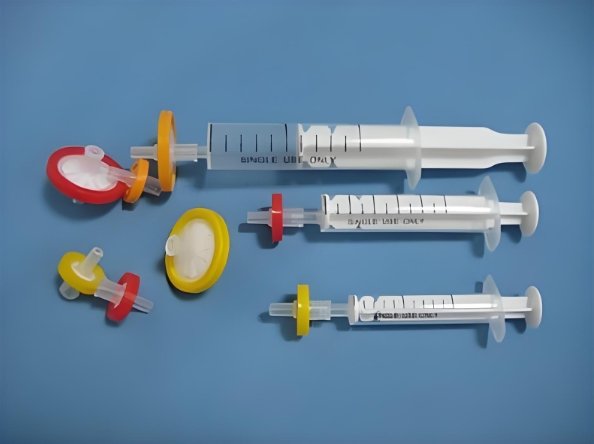
Waste reduction is essential in medical injection molding. High-quality production with minimal defects ensures efficiency and cost savings. Mold makers use advanced technology to reduce material waste, improve yield, and enhance sustainability. Optimized processes lower costs while maintaining regulatory compliance.
1. Why Waste Reduction Matters in Medical Injection Molding
1.1 High Cost of Medical-Grade Materials
- FDA-approved plastics are expensive.
- Reducing material waste lowers overall costs.
1.2 Strict Medical Industry Standards
- Defective parts must be discarded.
- Efficient molding ensures high-quality production.
1.3 Environmental Impact of Plastic Waste
- Sustainability is becoming a priority.
- Lower waste improves eco-friendly manufacturing.
1.4 Improving Production Yield
- Higher yield means fewer rejected parts.
- Reduces unnecessary material and labor costs.
2. Major Sources of Waste in Medical Injection Molding
2.1 Excess Material Usage
- Overpacking molds leads to scrap.
- Poor design increases raw material waste.
2.2 Defective or Rejected Parts
- Contamination or molding defects cause rejections.
- Defects increase production costs and slow output.
2.3 Long Cycle Times
- Slow cooling leads to increased energy waste.
- Inefficient cycle times reduce output.
2.4 Poor Mold Design
- Outdated or low-quality molds create inconsistencies.
- Frequent repairs add extra costs.
3. How Mold Makers Reduce Waste
3.1 Optimizing Mold Design
- Mold makers design multi-cavity molds for better yield.
- Hot runner systems eliminate sprue waste.
3.2 Using Durable Mold Materials
- High-quality steel molds last longer.
- Proper coatings prevent wear and extend mold life.
3.3 Implementing Conformal Cooling
- Improves heat distribution for uniform parts.
- Reduces warping and defects.
3.4 Designing for Recyclable Materials
- Mold makers create designs that support reprocessed resins.
- Helps lower raw material costs.
4. Process Improvements to Reduce Waste
4.1 Scientific Molding Techniques
- Uses precise pressure and temperature control.
- Minimizes defects and material loss.
4.2 AI-Powered Process Monitoring
- Detects issues in real time.
- Prevents defective parts before molding is complete.
4.3 Predictive Maintenance for Molds
- IoT sensors track mold wear.
- Prevents unexpected breakdowns and waste.
4.4 Smart Material Handling
- Automated systems reduce human error.
- Prevents contamination and overuse.
5. Improving Yield in Medical Injection Molding
5.1 Optimizing Cycle Time
- Faster cooling and ejection improve output.
- Reduces waiting time between cycles.
5.2 Real-Time Quality Control
- Vision inspection systems detect defects instantly.
- AI corrects variations during production.
5.3 Automation for Consistency
- Robotic arms ensure precise part removal.
- Reduces defects caused by manual handling.
5.4 Using Low-Waste Mold Materials
- Self-lubricating materials reduce scrap rates.
- Improves durability and yield over time.
6. Sustainable Practices in Medical Injection Molding
6.1 Using Recycled Medical-Grade Plastics
- Reduces reliance on virgin materials.
- Lowers production costs while meeting compliance.
6.2 Biodegradable and Green Materials
- New resins offer eco-friendly alternatives.
- Meets sustainability goals without sacrificing quality.
6.3 Energy-Efficient Molding Machines
- Hybrid and electric machines use less power.
- Optimized heating and cooling lower energy consumption.
6.4 Lean Manufacturing Strategies
- Reduces waste at every stage.
- Improves material flow and efficiency.
7. Future Trends in Waste Reduction and Yield Improvement
7.1 AI-Driven Smart Factories
- Fully automated systems reduce errors.
- Maximizes production with minimal waste.
7.2 Digital Twin Technology for Mold Testing
- Simulates molding processes before production.
- Prevents costly trial-and-error waste.
7.3 Blockchain for Waste Tracking
- Provides full traceability of material use.
- Ensures compliance with sustainability standards.
7.4 Advanced Recycling Techniques
- Improves reprocessing of medical plastics.
- Reduces long-term material costs.
7.5 3D Printing for Mold Prototyping
- Reduces errors in mold design.
- Lowers waste from defective tooling.
Reducing waste and improving yield in medical injection molding is essential. Mold makers optimize designs, use AI monitoring, and implement sustainable materials. Smart manufacturing reduces material loss, energy use, and costs. By improving efficiency, manufacturers produce high-quality medical components with minimal waste.
